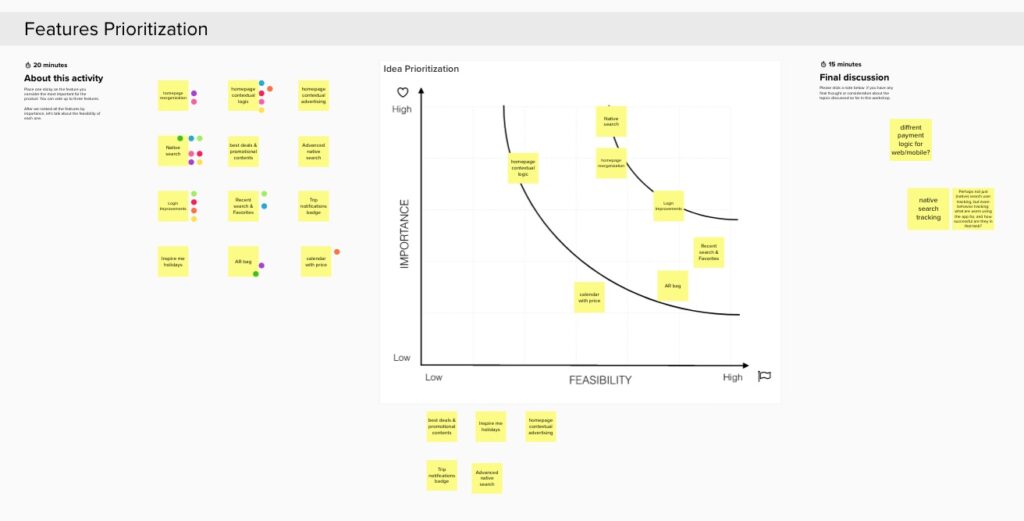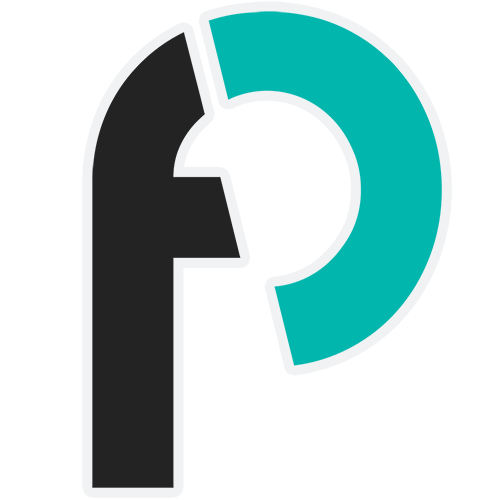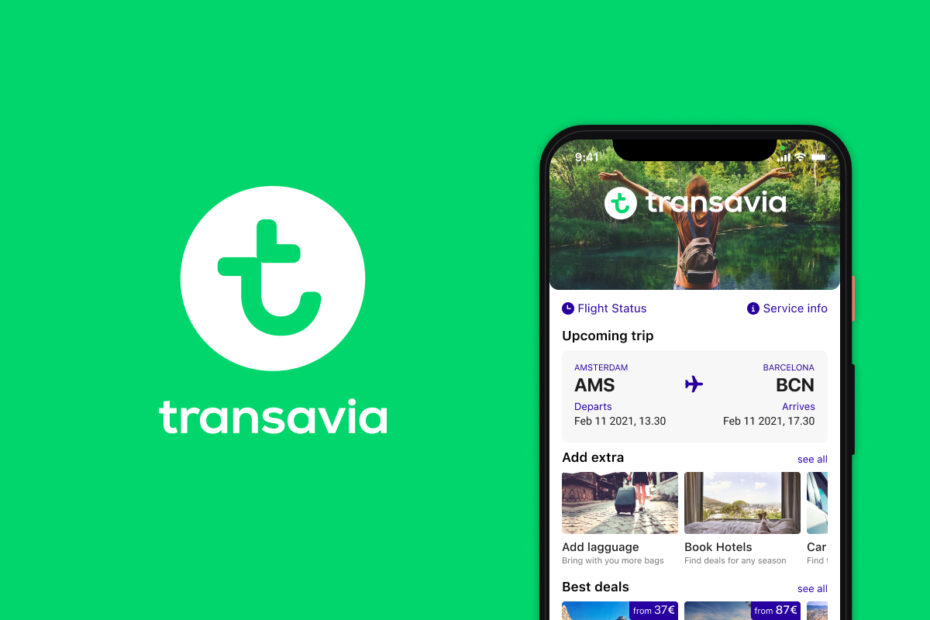Overview
Build the long term vision is an important aspect of product design. The goal of this project was to define a 1-2 years roadmap in collaboration with our client.
MY ROLE
Research planning and execution, UI design and prototyping, data analysis
Duration: Dec 2020 – Feb 2021
Background
Transavia is a Dutch low-cost airline and Travelport partner which uses our white-label Fusion app. Transavia app is a mobile application for flight booking and ticket management.
The product roadmap for this app is shaped converging both by Travelport and Transavia business needs.
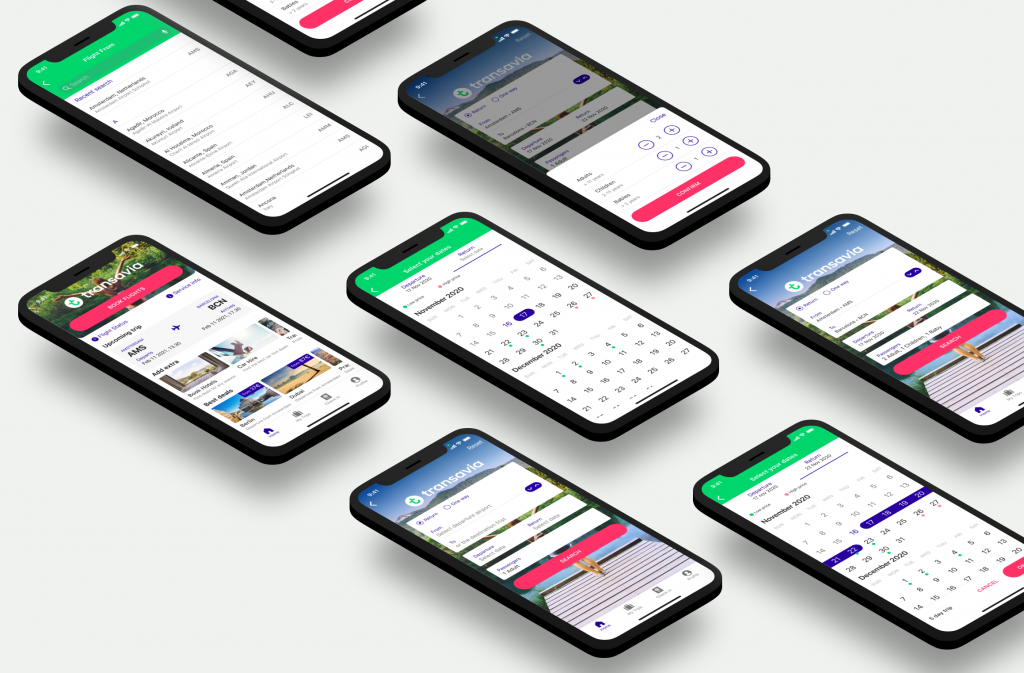
The Challenge
Building the product vision is indispensable to advancing a product! A product vision describes the future state of a product that a company or team desires to achieve and it is fundamental to give a clear direction to development and design.
This case study presents how we organized a workshop to align investors and stakeholders on the strategies required to match both users and business needs.
This session of vision building has been completely run remotely due to the Covid pandemic. This gave us the opportunity to experiment an alternative workshop set-up to the usual one-day, on-site, whiteboard-room event.
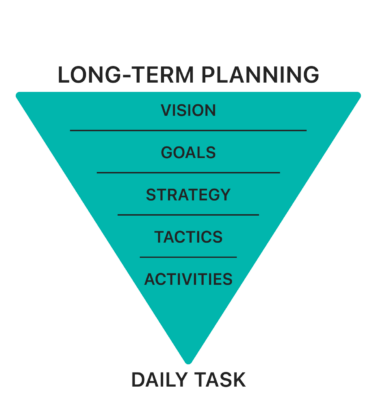
1. Discovery
Before planning the workshop, we ran discovery research using internal and external resources focusing on how users engage with the Transavia app, which are the main pain points and which are the best strategies to optimize the booking flow.
Results have been summarized in a user journey map that helped us to better frame the problem, identify which stage of the user journey needed more improvements (e.g. Inspiration, Shopping, Booking) and highlight app missing features and opportunities.
This journey map has been presented as well during the workshop to help investors and stakeholders empathize with users needs and their mental processes.
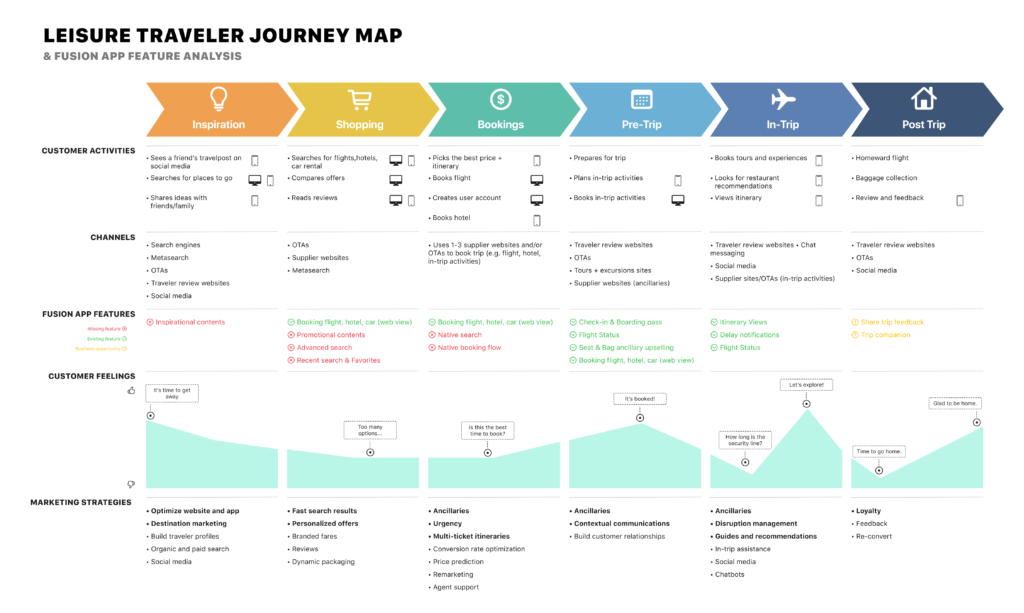
Once we identified app gaps and opportunities of improvement, we ran a competitor analysis with the major European airlines. The findings highlighted:
- Weakness and strengths among competitors
- Common interaction solution
- Standard UI pattern
- Best practices
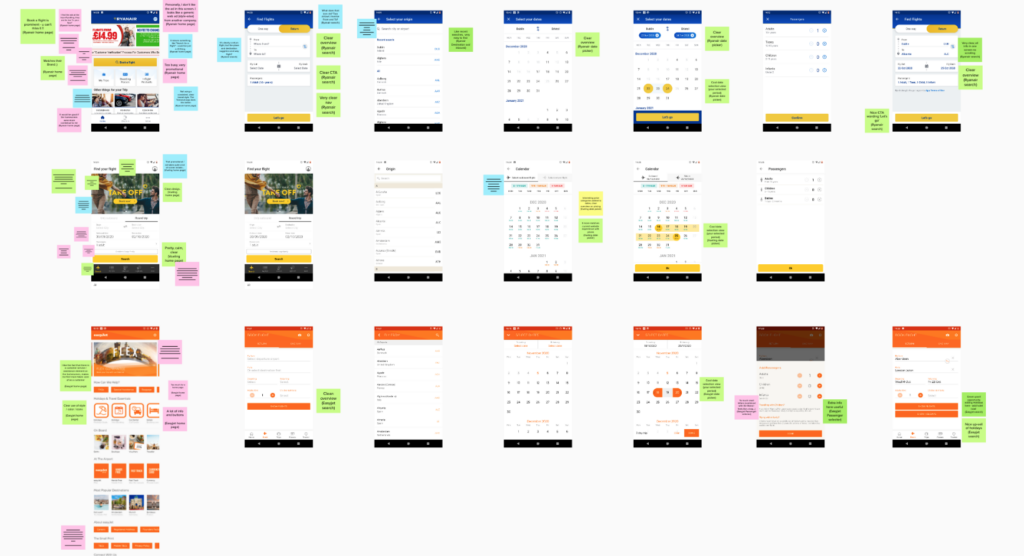
MURAL is a virtual space that helps team members to collaborate remotely.
2. Ideation
The main idea behind this workshop was to identify which solutions we needed to introduce in the roadmap keeping in mind the expectations of the investors and the user needs. Considering the workshop audience wasn’t aligned on any specific solution, we explored upfront some ideas in order to help participants to visualize the concepts and facilitate the discussion.
The first phase of the ideation process was brainstorming some ideas of new features taking into account the insights from the discovery phase. This activity has been facilitated using a Mural page where we defined for each new concept business benefit, user value, research needed in further stages.
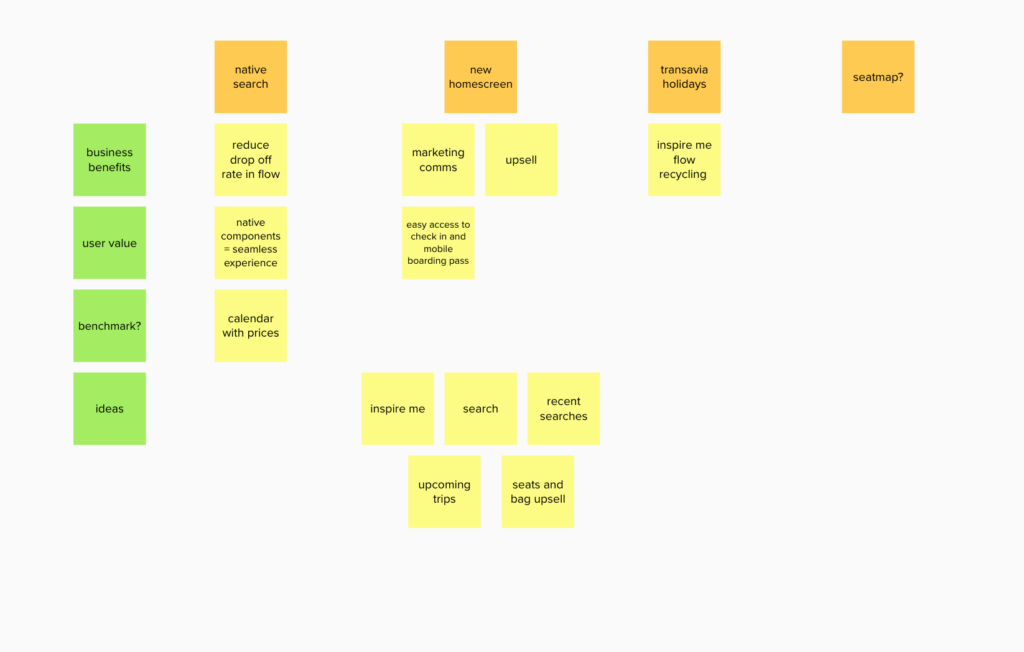
Then, for each idea that passed the initial evaluation, has been created several UI explorations and Hi-Fi mock-ups used to better define the technical feasibility and possible limitations.
The result of this ideation phase had been a number of polished concepts to present in the workshop.
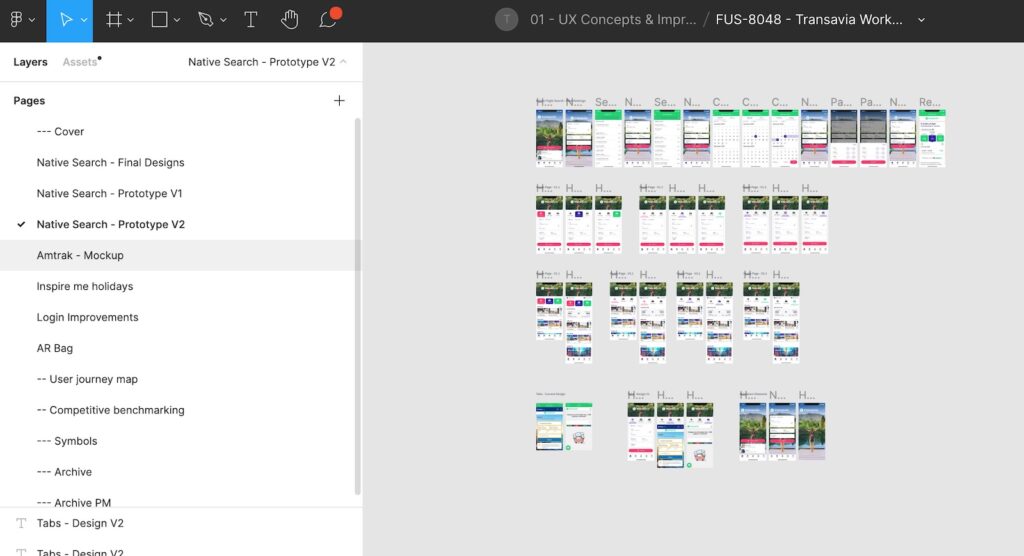

3. Planning and execution
We meticulously planned the workshop agenda bearing in mind the remote setup. A great emphasis has been given to keeping the whole session within the 3 hours to avoid participant fatigue and give enough breaks to sustain focus and motivation.
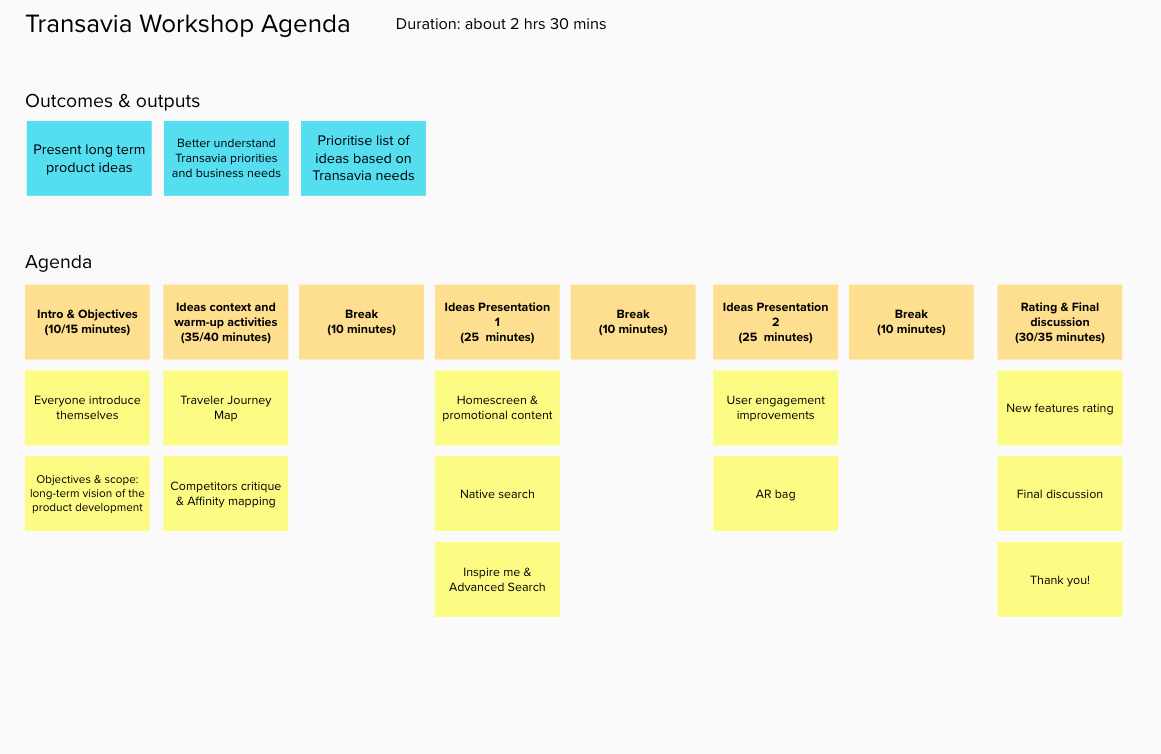
The first item in the agenda has been a quick intro where participants were aligned to the meeting scope and objectives.
Then, warm-up activities has been conducted to set a context for the presentation of the new features ideas.
These activities included the discussion of the customer journey map and a benchmarking critique follow-up by an affinity map exercise with feedback given.
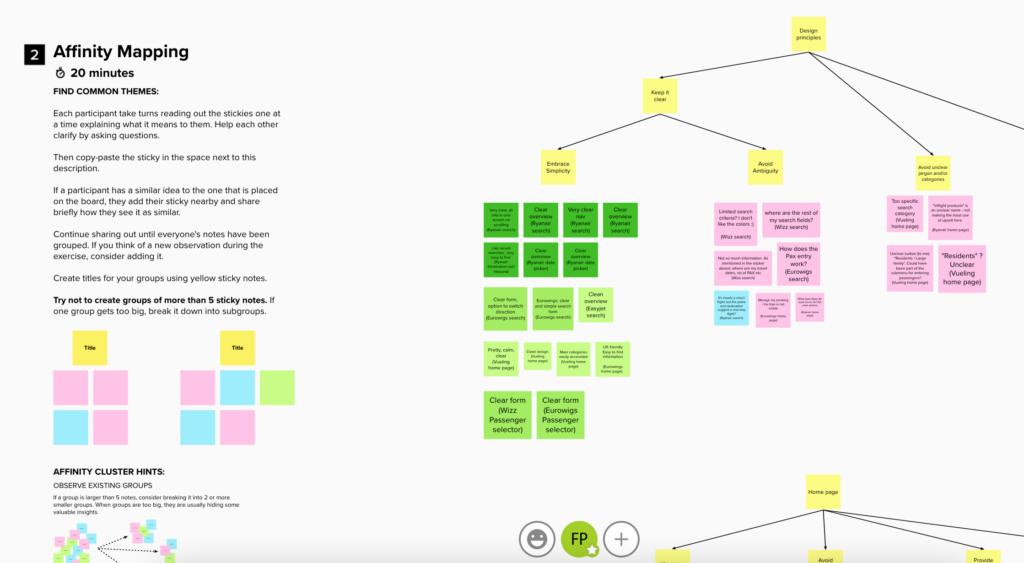
Finally, concepts of the new features were presented, discussed, voted and then prioritized considering feature feasibility and importance.
